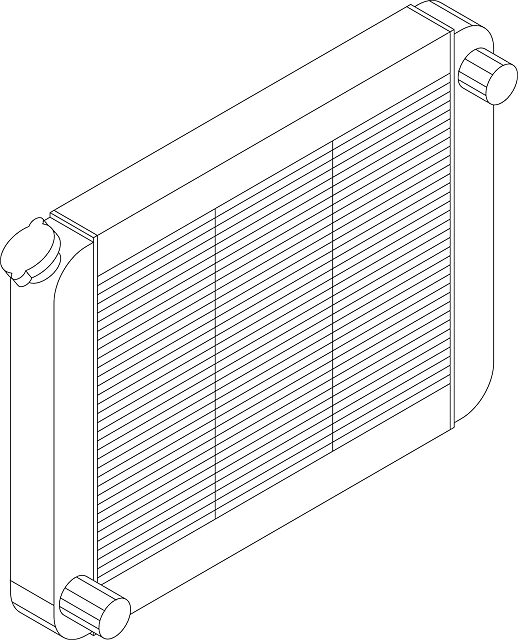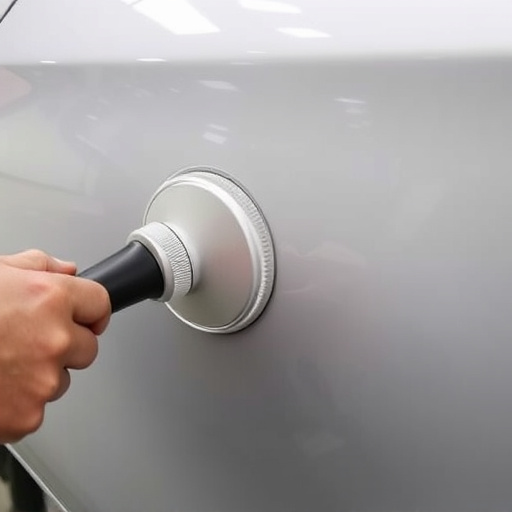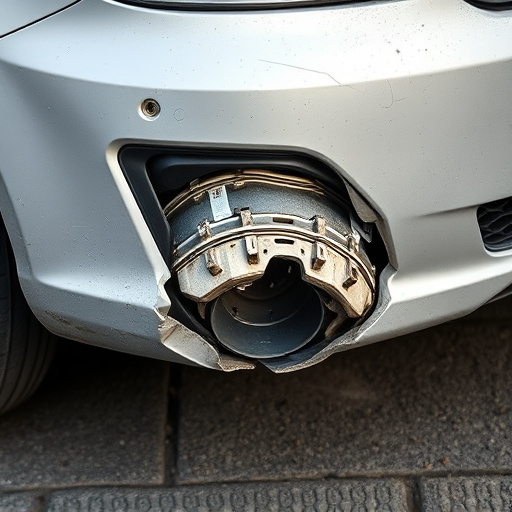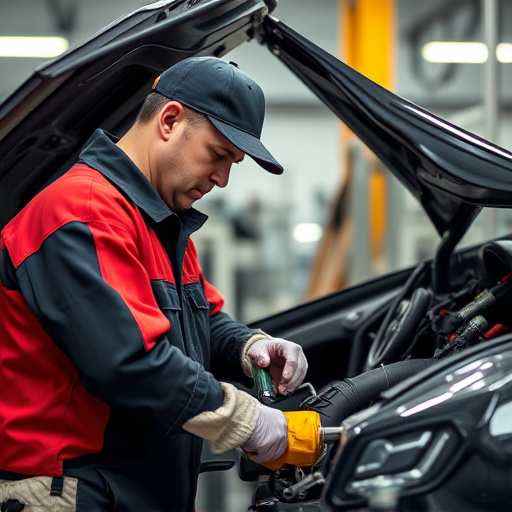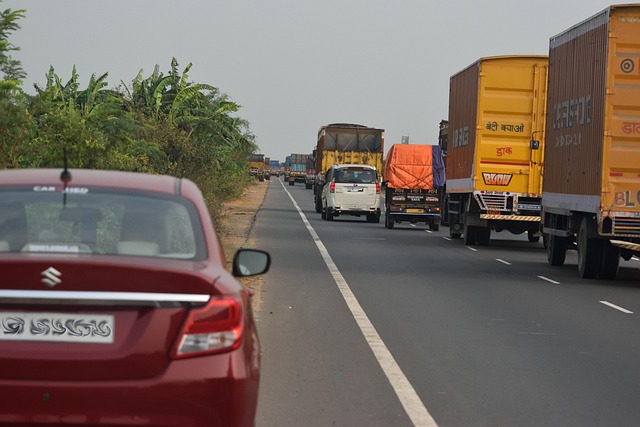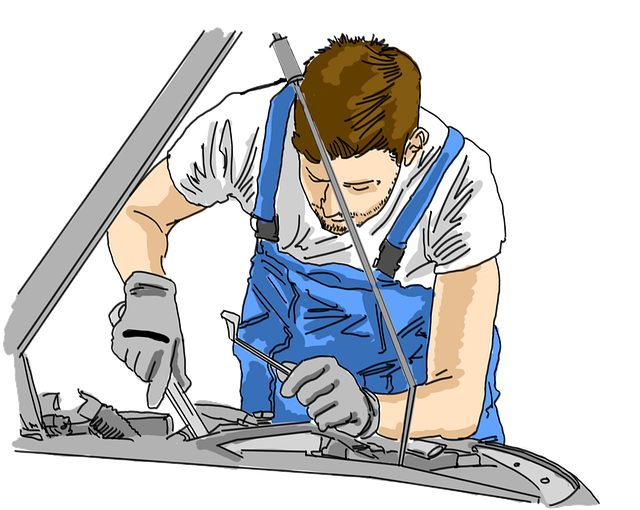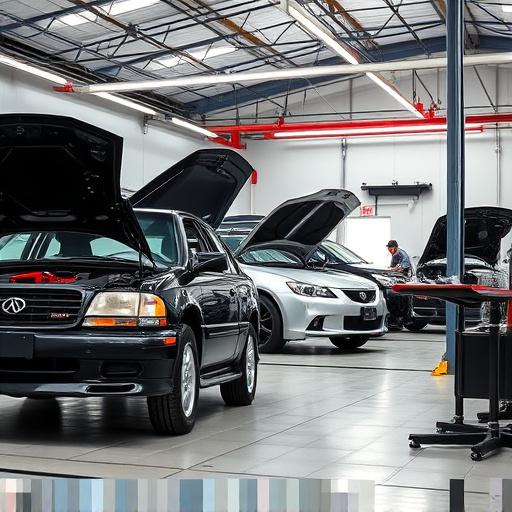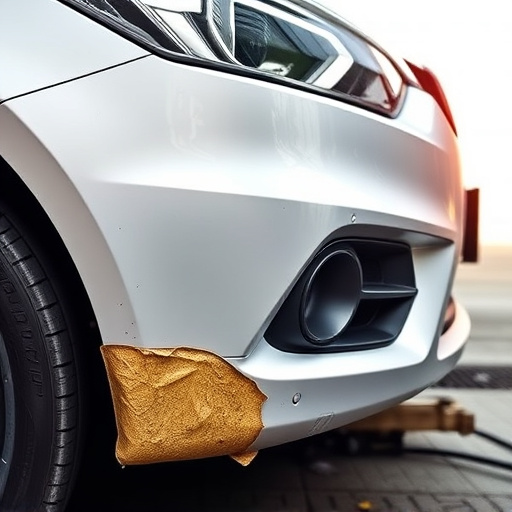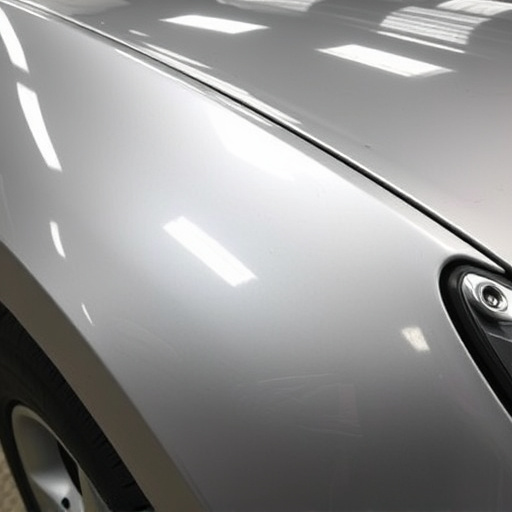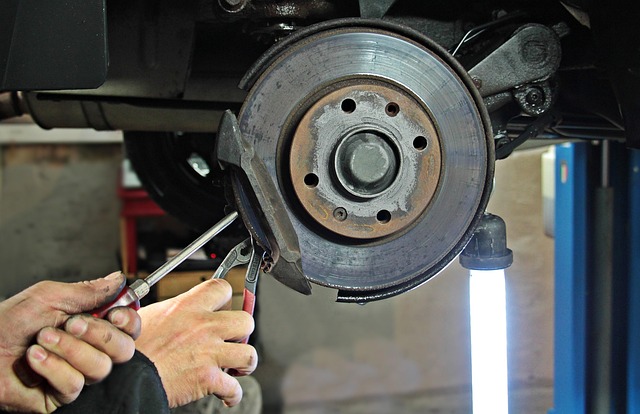TIG welding collision systems are transforming auto body repair, prioritizing safety and efficiency through precise tungsten inert gas (TIG) welding techniques. These advanced systems enhance structural integrity, minimize heat-induced damage, and achieve seamless finishes on modern vehicle designs, reducing costly repairs and setting a new standard in collision repair. Real-world applications have proven their effectiveness across various industries, with promising future advancements poised to refine precision, reduce downtime, and contribute to safer roads and sustainable automotive practices.
In today’s industrial landscape, ensuring safety post-collision is paramount. TIG welding collision systems emerge as game-changers, offering advanced solutions to enhance structural integrity and worker protection. This article delves into the intricate world of TIG welding, exploring how its collision systems revolutionize safety measures. From understanding the technology to examining real-world case studies, we uncover the profound impact of TIG welding collision systems in fostering safer manufacturing environments, with a focus on their evolving prospects.
- Understanding TIG Welding and Collision Systems
- Post-Collision Safety Enhancements with TIG Technology
- Real-World Impact: Case Studies and Future Prospects
Understanding TIG Welding and Collision Systems

TIG welding collision systems are designed to revolutionize auto body repair by enhancing safety and efficiency post-collision. TIG welding, or tungsten inert gas welding, is a specialized technique that joins metals using a non-consumable tungsten electrode, creating precise, clean welds. This method is particularly valued in delicate applications like custom fabrications and art pieces due to its ability to produce high-quality, consistent results.
In the context of collision repair, these systems play a pivotal role by enabling skilled technicians to accurately assess and address damaged vehicle components. By integrating TIG welding capabilities, auto body repair shops can offer more comprehensive solutions, ensuring structural integrity and aesthetic appeal are both restored. This advanced technology not only speeds up the repair process but also enhances safety by minimizing the risk of further damage during the collision repair procedures.
Post-Collision Safety Enhancements with TIG Technology

In the realm of automotive collision repair, TIG welding collision systems have emerged as a game-changer, revolutionizing safety enhancements post-collision. These advanced systems utilize gas metal arc welding (TIG) technology to meticulously repair vehicles, ensuring structural integrity and optimal performance. Unlike traditional methods, TIG welding offers precise control over heat input, enabling the preservation of sensitive materials and intricate designs often found in modern vehicles. This meticulous approach is particularly beneficial for car dent repair, where maintaining the original aesthetics is paramount.
The integration of TIG technology into vehicle collision repair processes vastly improves the overall safety of repaired vehicles. By delivering focused, controlled energy to affected areas, these systems minimize heat-induced damage to adjacent components, preventing further complications. Moreover, TIG welding collision systems enhance the longevity and durability of repairs, ensuring that vehicles not only look good as new but also perform optimally on the road. This level of craftsmanship is invaluable in the car dent repair sector, where a seamless, indelible finish is the ultimate goal.
Real-World Impact: Case Studies and Future Prospects

In real-world applications, TIG welding collision systems have proven their mettle, offering substantial enhancements in safety and structural integrity post-collision. Case studies from various industries highlight the effectiveness of these systems in minimizing damage to vehicles involved in accidents, thereby reducing the need for extensive and costly vehicle repair services. For instance, in auto body restoration, TIG welding has been instrumental in preserving the original aesthetics and strength of cars, showcasing its versatility in both structural repairs and meticulous cosmetic refinements.
Looking ahead, future prospects for TIG welding collision systems are promising, with advancements in technology poised to further refine their capabilities. As car restoration techniques continue to evolve, these systems will play an increasingly vital role in ensuring the safety and longevity of vehicles across diverse sectors. This evolution suggests a future where vehicle repair services benefit from enhanced precision, reduced downtime, and improved overall performance, ultimately contributing to safer roads and more sustainable automotive practices.
TIG welding collision systems represent a significant advancement in post-collision safety, offering robust solutions that enhance structural integrity and passenger protection. By integrating advanced materials and precision techniques, these systems not only minimize damage but also ensure better performance in real-world scenarios. As the automotive industry continues to evolve, the adoption of TIG welding technology for collision repairs will play a pivotal role in improving vehicle safety and sustainability, setting new standards for post-collision resilience.
